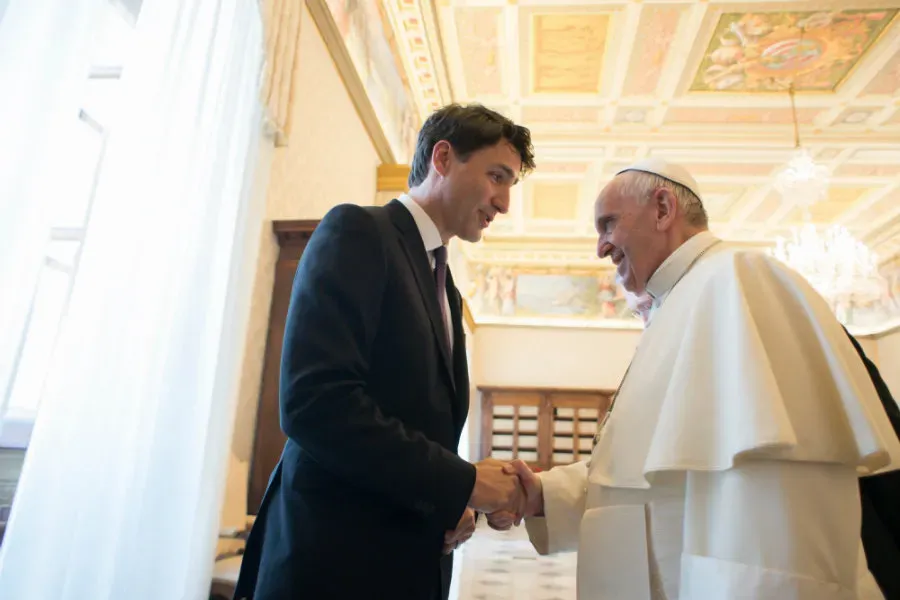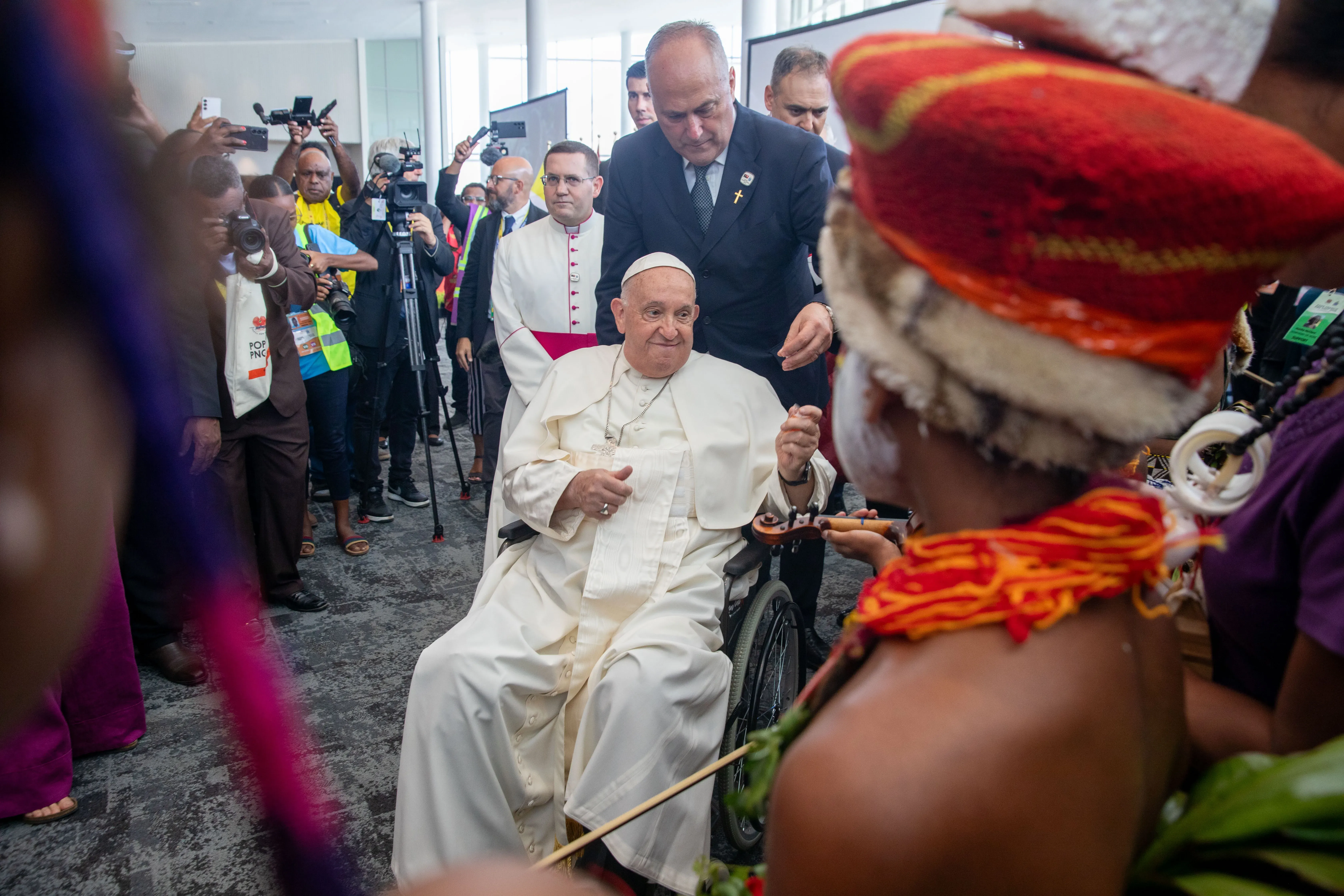The Canadian Bishops' Conference acknowledged in a November 1993 brief for the Royal Commission on Aboriginal People that "the various types of abuse experienced in some residential schools have led us to a profound examination of conscience in the Church."
Since the 1990s, the Catholic Bishops' Conference of Canada and orders such as the Jesuits offered apology statements such as this one on the bishops' official website.
The response also included the establishment of a $30 million national pledge made by Canadian Bishops in September 2021.
Similarly, the Holy See has increasingly come to terms with this chapter of the Church’s history in Canada.
Pope John Paul II visited in 1984 and 1987. On both occasions, he met indigenous people, exalting their culture and the renewal brought to them by Christianity.
(Story continues below)
Benedict XVI met with Phil Fontaine, Great Chief of the Assembly of the First Nations of Canada, at the end of the general audience on Apr. 29, 2009.
He "recalled that since the earliest days of her presence in Canada, the Church, particularly through her missionary personnel, has closely accompanied the indigenous peoples." Referring to residential schools, Benedict XVI expressed "his sorrow at the anguish caused by the deplorable conduct of some members of the Church, and he offered his sympathy and prayerful solidarity."
An early whistleblower and a recent warning
At the turn of the 20th century, Peter Henderson Bryce, a public health official and physician, was the first to report about unsanitary conditions in residential schools in Canada. He gathered all the information he could and then, in 1907, published his findings — according to which about a quarter of the indigenous children in residential schools had died of tuberculosis.
Bryce also pointed to the wider question of discrimination, noting that health funds for average citizens of Ottawa were about three times higher than those for First Nations peoples.
Government policies, in other words, had caused the deaths of many indigenous children.
Following attempts by government officials to silence him, Bryce published, at his expense, a small booklet on the issue, titled The Story of a National Crime.
Writing about “myth versus evidence”, Mark DeWolf noted in a 2018 essay — published by public policy think tank FCPP — that "cultural repression, abuse of all kinds, forceful incarceration and even avoidable deaths did happen, and a system that should have done much more to avoid these things should be justly condemned."
He concluded that the residential schools system was bad and “a deeply flawed attempt to accomplish two main objectives: to give native children education and training that would help them survive economically and socially in a white man's world, and to eradicate those aspects of native culture that would hold them back from achieving those goals.”
At the same time, pointing to low attendance numbers and other aspects of the system, DeWolf warned of making the residential schools “a scapegoat for 200 years of land appropriation, cultural invasion, deprivation, marginalization, and demoralization.”
Otherwise, little would be done to stop and reverse bad policies and practices today.
This point is pertinent, irrespective of whether one agrees with DeWolf otherwise: A 2019 Canadian Human Rights Court ruling established that between 2006 and 2017, the government had removed between 40,000 to 80,000 indigenous children from their families and deprived them of social services. In addition, the ruling sentenced Canada to pay $40,000 to each victim for discriminatory conduct. The government appealed the ruling, without success.
To further add to the complexity, critics have raised questions about irresponsible media reporting when the discovery of what was first described as unmarked graves on the grounds of the former Kamloops Indian Residential made international news.
On June 24, 2021, it was first announced that 751 unmarked graves had been discovered at the site of a former school. Leaders emphasized that the discovery was of unmarked graves, and not a “mass grave site.”
Nonetheless, following the news, some Catholic churches in Canada were vandalized or found ablaze.
A gesture with consequences – and an open question
Pope Francis decided to apologize for the Catholic Church's role and assume responsibility, neither commenting on the issue of sometimes questionable media coverage, nor pursuing the question of just how responsible the Church was within the wider historical context.
In short, this visit is a great act of goodwill by the pope, and one that intends to heal and reconcile.
This may also apply to relations between Canada and the Holy See, as these have been strained for a while. The issue of the “Indian residential schools” system was likely one of the reasons.
Currently, Canada has not formally appointed an ambassador to the Holy See. There is a chargée d'Affaires, Paul Gibbard. He took the position in the year 2021, after three years of vacancy. The last Canadian ambassador to the Holy See was Dennis Savoie, who was in office from 2014 to 2018.
This Papal trip might help to somewhat normalize relations, and the position of Gibbard might be upgraded to that of an ambassador. However, after the visit, the full reality and extent of the residential schools system still needs to be fully brought to light — and not just with a view to the role of the Church.
Andrea Gagliarducci is an Italian journalist for Catholic News Agency and Vatican analyst for ACI Stampa. He is a contributor to the National Catholic Register.








